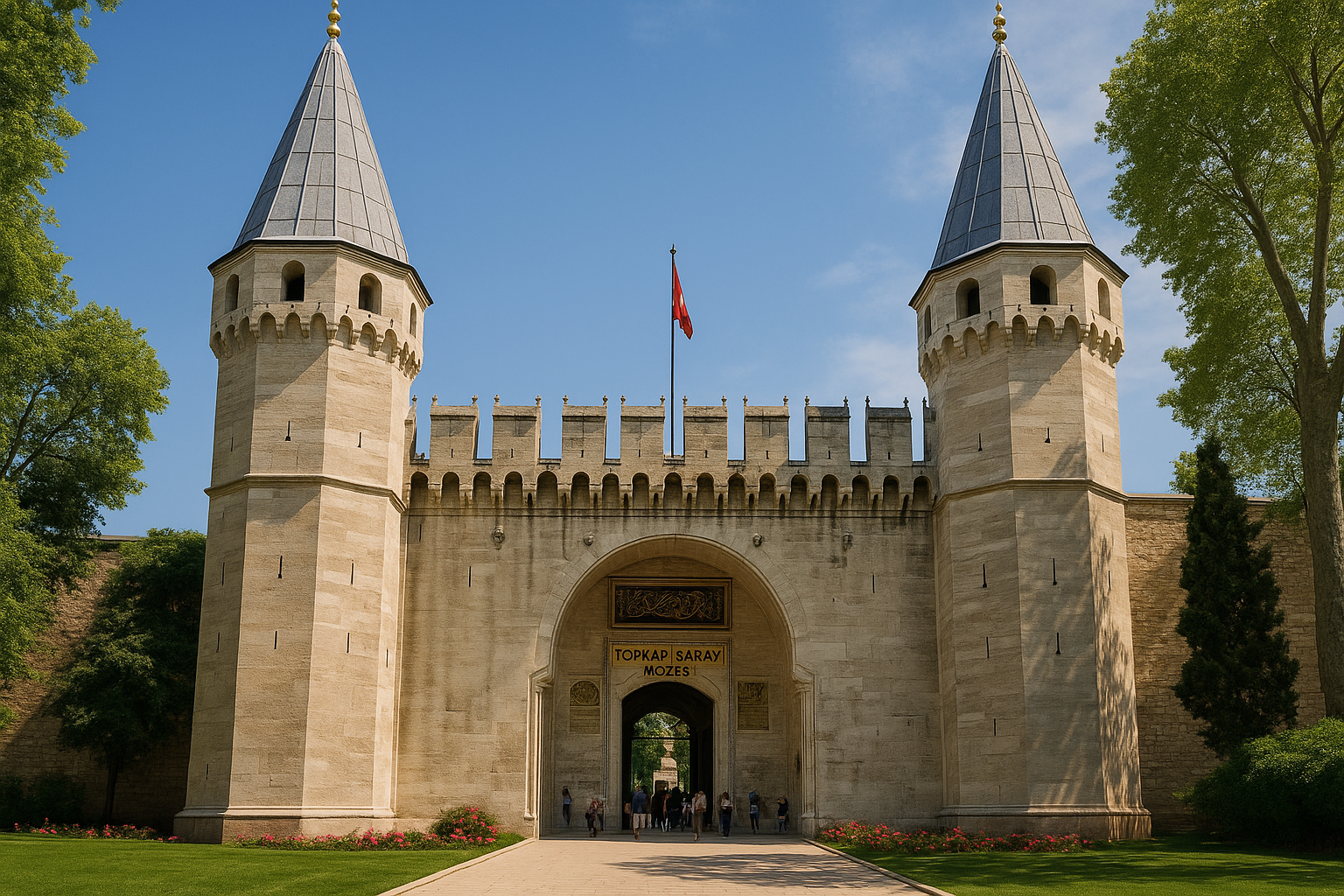
Topkapı Sarayı (Topkapi Palace & Harem)
HISTORICAL BACKGROUND AND SIGNIFICANCE
Topkapı Sarayı, or Topkapi Palace, is one of the most significant historical sites in Istanbul, reflecting the grandeur of the Ottoman Empire. Constructed between 1459 and 1465 under the orders of Sultan Mehmed II, who is known as the Conqueror, the palace served as the administrative center and royal residence of the Ottoman sultans for nearly 400 years. The choice of location, overlooking the Bosphorus Strait, was strategic, allowing the sultans to control maritime trade routes and defend the city against potential invaders.
The palace complex consists of four main courtyards and numerous buildings, each serving different functions, from administrative offices to the private quarters of the sultan and his family. The palace was not just a residence; it was a symbol of the sultan's power and a center of political, cultural, and artistic life in the empire.
ARCHITECTURAL FEATURES AND DESIGN ELEMENTS
Topkapı Sarayı showcases a unique blend of architectural styles, primarily Byzantine and Islamic influences, reflecting the cultural diversity of the Ottoman Empire. The layout of the palace is organized around a series of courtyards, each with its own distinct purpose.
1. **First Courtyard**: This area is open to the public and serves as a transition zone from the outside world. It includes the Imperial Gate, which leads into the palace, and the Hagia Irene, an ancient Byzantine church that now serves as a museum.
2. **Second Courtyard**: This courtyard is where the administrative buildings are located, including the Divan (Imperial Council) and the Imperial Treasury. The architecture here is characterized by elegant arches and intricate tile work, showcasing the artistry of the period.
3. **Third Courtyard**: This area houses the private quarters of the sultan, including the Harem, which was home to the sultan's family and concubines. The Harem is a complex of rooms adorned with exquisite tiles and opulent furnishings, reflecting the luxurious lifestyle of the Ottoman elite.
4. **Fourth Courtyard**: This is the most private area of the palace, featuring gardens, pavilions, and breathtaking views of the Bosphorus. The architecture here is more relaxed, with an emphasis on nature and tranquility.
The palace is adorned with stunning tile work, calligraphy, and intricate woodwork, all of which contribute to its status as a masterpiece of Ottoman architecture.
CULTURAL AND RELIGIOUS IMPORTANCE
Topkapı Sarayı is not only a historical site but also a cultural symbol of the Ottoman Empire. It served as a center for the arts, education, and religion. The palace was home to many scholars, poets, and artists who contributed to the rich cultural tapestry of the empire.
The Harem, in particular, holds significant cultural importance, as it was a place where women of the royal family lived and influenced political decisions. The dynamics within the Harem were complex, with women playing crucial roles in the power struggles of the empire. The stories of the women who lived there, such as Hürrem Sultan (Roxelana), who became a powerful figure in her own right, add depth to the palace's history.
VISITOR EXPERIENCE AND WHAT TO EXPECT
Visiting Topkapı Sarayı is like stepping back in time. Upon entering, visitors are greeted by the grandeur of the palace grounds, with lush gardens and stunning views of the Bosphorus. The experience is enhanced by informative displays and guided tours that provide insights into the history and significance of the various buildings.
Inside the palace, visitors can explore the Imperial Treasury, which houses an impressive collection of artifacts, including the famous Topkapi Dagger and the Spoonmaker's Diamond. The Harem section offers a glimpse into the private lives of the sultans and their families, with beautifully decorated rooms and courtyards.
The palace also features a café where visitors can relax and enjoy traditional Turkish tea or coffee while taking in the stunning views of the surrounding area.
INTERESTING FACTS AND ANECDOTES
1. **The Name**: The name 'Topkapı' translates to 'Cannon Gate,' a reference to the large cannons that were used during the conquest of Constantinople. 2. **Harem Life**: The Harem was not just a place of leisure; it was a highly organized institution with its own hierarchy and rules. Women in the Harem had significant influence and could even wield political power through their relationships with the sultan. 3. **Cultural Exchange**: The palace served as a melting pot of cultures, where various art forms, languages, and traditions coexisted, reflecting the diverse nature of the Ottoman Empire.
PRACTICAL VISITING INFORMATION
- **Hours**: Topkapı Sarayı is open to visitors daily, except Tuesdays. The visiting hours are typically from 9 AM to 6 PM, but it is advisable to check the official website for any changes. - **Best Times to Visit**: The best time to visit is during the spring (April to June) and fall (September to November) when the weather is pleasant, and the crowds are smaller. - **Tips**: - Purchase tickets in advance to avoid long queues, especially during peak tourist seasons. - Consider joining a guided tour to gain deeper insights into the history and architecture of the palace. - Wear comfortable shoes, as there is a lot of walking involved, and be prepared to spend several hours exploring the vast complex.
In conclusion, Topkapı Sarayı is a must-visit destination for anyone interested in the rich history and culture of Istanbul. Its stunning architecture, fascinating stories, and beautiful gardens make it a place of wonder and reflection, offering a unique glimpse into the opulent world of the Ottoman Empire.